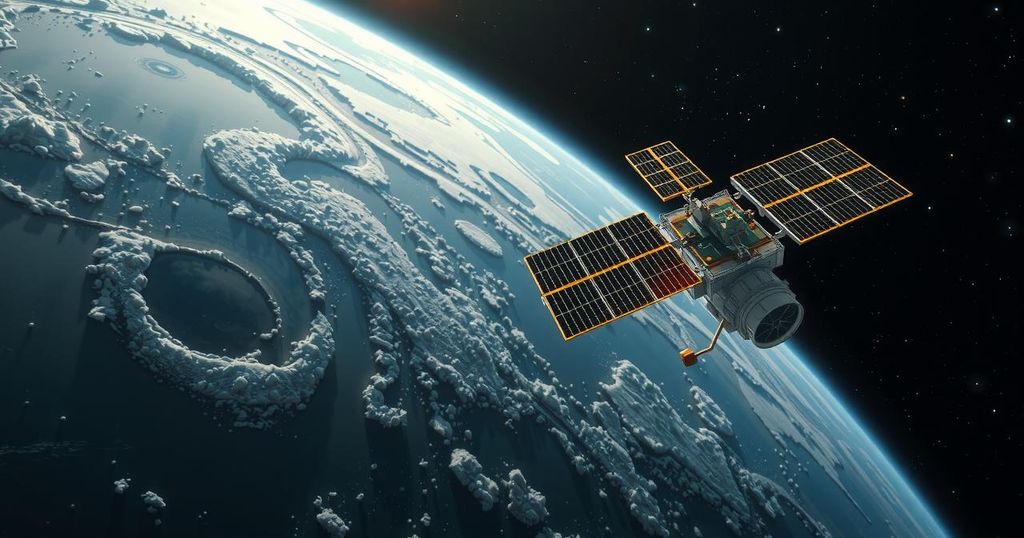The article examines the crucial function of weather satellites, especially the GOES program, in enhancing weather forecasting and disaster preparedness. The collaboration of NOAA and NASA has resulted in advanced satellite systems that deliver real-time data, aiding in timely warnings for hurricanes and other natural disasters. The advancements in satellite technology underscore the importance of proactive measures to protect lives and property against increasingly common environmental threats.
In recent years, the critical role of weather satellites, particularly the Geostationary Operational Environmental Satellites (GOES) program, has become evident with the threat of hurricanes and other natural disasters. As showcased during Hurricane Helene’s and Hurricane Milton’s landfalls in Florida, NOAA employed the GOES system to issue timely warnings, demonstrating the effectiveness of space-based weather monitoring. The partnership between NOAA and NASA has facilitated the implementation and operation of the GOES-R series, the most advanced suite of geostationary satellites to date. The GOES program, operational since 1975, consists of satellites positioned at approximately 22,300 miles above Earth to provide a continuous overview of the Western Hemisphere. The current GOES-R series consists of two active satellites that ensure coverage from the Arctic Circle down to the Antarctic Cone, safeguarding over one billion individuals residing in the Americas. The support from The Aerospace Corporation has proven invaluable to this initiative, enhancing technical capabilities across the mission lifecycle while ensuring concrete advancements in weather forecasting. Historically, the establishment of weather satellites was motivated by events such as the devastating Galveston Hurricane of 1900, where the absence of predictive technologies resulted in tragic loss of life. As Peter Phillips of Aerospace noted, “The motivation for weather prediction eventually led to weather satellites, and that directly contributes to preserving life, health and property.” The sophisticated imaging capabilities of the GOES satellites have enabled advanced warnings that serve to save millions of lives. The GOES-16 satellite, launched in 2016, first captured data on Hurricane Helene. Following this, the satellite will soon be succeeded by GOES-19, which is currently undergoing testing. This newer satellite boasts an Advanced Baseline Imager designed to gather comprehensive environmental data across various wavelengths. Furthermore, the growing data management capabilities ensure that NOAA disseminates essential information globally, strengthening community readiness during hazardous weather situations. The ongoing collaboration between The Aerospace Corporation, NOAA, and NASA has been pivotal in the operational success of the GOES program. Aerospace personnel contributed expertise in systems engineering and data operations support, vital for processing extensive volumes of satellite data. Recognized for these contributions, Phillips has received multiple prestigious awards from NASA, underscoring the profound impact of their work. Their efforts also include advancements such as the Compact Coronagraph for the upcoming GOES-19, which will enhance monitoring of space weather threats. Looking toward the future, the development of the Geostationary Extended Observations (GeoXO) program is already underway, aiming to further improve capabilities for addressing critical environmental challenges. As Phillips emphasizes, “The value of weather forecasting and prediction… is incalculable.” The continuous evolution of satellite technology affirms the necessity of robust data collection systems, enhancing decision-making and disaster response measures while eventually saving lives and resources.
The article discusses the significant advancements in weather monitoring and forecasting facilitated by the Geostationary Operational Environmental Satellites (GOES) program, particularly the latest GOES-R series. It underscores the collaborative efforts between NOAA and NASA, highlighting the satellites’ roles in providing timely warnings for hurricanes and other natural disasters. The importance of these technologies has grown as climate-related events become more frequent and damaging, emphasizing the need for advanced monitoring systems to protect populations and improve disaster response.
In summary, the GOES program serves as a linchpin in weather satellite technology, significantly aiding in disaster preparedness and response. By providing timely and accurate weather data, these satellites have proven essential in safeguarding lives and properties, particularly in the face of increasing natural disasters. The collaborative work between Aerospace, NOAA, and NASA sets an important foundation for future advancements, showcasing the indispensable role of satellite technology in modern meteorology and environmental monitoring.
Original Source: aerospace.org






